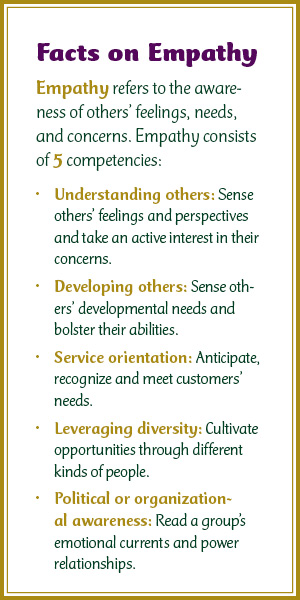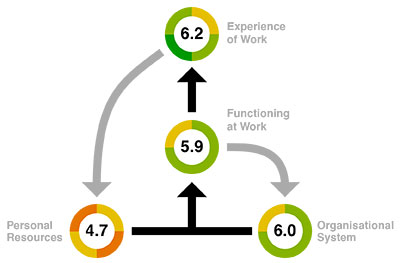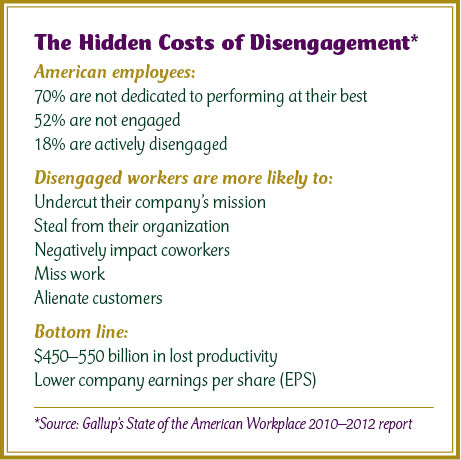
In this post, we pick up the conversation about Dr. Paul E. White and Dr. Gary Chapman’s The 5 Languages of Appreciation in the Workplace begun in our last post.
The 5 Languages of Appreciation
Words of Affirmation
This is the most common form of appreciation expressed in the workplace, and it is especially important to practice with individuals whose primary language of appreciation is verbal praise.
Here are a few ways to apply words of affirmation in the workplace:
- Praise individual employees for specific accomplishments.
- Notice and affirm personal character traits.
- Focus on positive personality traits that benefit the workplace.
When you praise positive behavior, the employee is more likely to repeat that behavior.
Praise and recognition can be public or private; introverted employees may prefer a quieter approach, while others will feel most appreciated when praise is shared in front of coworkers.
Individual, one-on-one expressions of appreciation are the most valued and thus the most effective approach. Sending emails or texts thanking an employee for a particular project or praising a specific characteristic are also effective. In a world where nearly all written communication is digital, handwritten notes can be especially meaningful.
Quality Time
If an employee’s language of appreciation is quality time, she will respond positively to the following actions:
- Offer your undivided attention, like so:
- Maintain eye contact while talking.
- Don’t multitask.
- Listen for thoughts and feelings.
- Affirm those feelings—even if you disagree.
- Observe body language and respond accordingly.
- Don’t interrupt (the average person listens 17 seconds before interrupting—try to beat that record).
- Find opportunities to create shared experiences.
- Engage in small group dialogue.
- Be in close physical proximity while accomplishing projects.
Working side by side on a shared goal creates a sense of quality time, even if you are working independently.
Physical presence isn’t enough to create a sense of quality time, however—you need to be emotionally present, too.
Acts of Service
For those who value acts of service, actions speak louder than words. Here are several ways to express appreciation to those who fall into this category:
- Ask if they want help.
- Offer your service voluntarily.
- Cultivate a cheerful attitude while helping out.
- Do it their way (you want them to feel the task is done “right”; otherwise, the service could backfire and make them feel they’d be better off doing it themselves).
- Complete what you start so they’re not left with an unfinished task (or warn them in advance that you can only help with a portion of the project, asking if they still want your help).
Receiving Gifts
A thoughtfully chosen gift suited to the individual can have an enormous impact on people whose primary language is tangible gifts. On the other hand, a poorly selected gift can give offense.
We are not talking about raises or monetary gifts; it has to be personal to the individual for it to be perceived as an expression of appreciation.
Here are a few tips on gift-gifting:
- Reserve gifts for those who list gifts as their primary or secondary language as gifts will likely have little impact on others.
- Give a gift the person values.
- Gifts are not always a thing; it can also be an experience like tickets to the theatre or a favorite sporting event.
- Time off from work can be a greatly appreciated gift.
Physical Touch
While there can be appropriate expressions of physical touch in the workplace—a friendly high-five, pat on the back, handshake, fist bump, hand on the shoulder or hug during a personal tragedy—this appreciation language is the trickiest to apply in a work environment.
The interpretation of touch varies widely according to individuals, the organizational subculture, and a person’s history with abuse. The risk of physical touch being perceived as sexual harassment is high in a culture where touch has been so highly sexualized.
Our research reveals that touch is the least important language for the workplace setting. Individuals who may have a primary language of physical touch in their romantic relationship may have an entirely different language in the workplace.
For those who do value touch as an expression of appreciation, however, affirming, non-sexual touches can be important.
The safest way to tell whether touch is an appropriate form of expression for that individual is to observe the employee’s behavior to see if he uses physical touch as an expression of appreciation to others. If a person stiffens in response to touch, that’s a good indication they are uncomfortable being touched.
3 Ways to Discover a Person’s Primary Language
Three-quarters of people intuitively express appreciation in their own language. This raises two significant points: 1) you can usually guess a person’s language of appreciation by observing how they express it to others and 2) just because you convey appreciation through your preferred language does not mean the recipient will feel appreciated. If you do not share the same language, the expression will fall on deaf ears.
To informally assess a person’s language of appreciation:
- Observe their behavior.
- Listen to their requests.
- Notice what they complain about (this usually reveals emotional hurts related to their language of appreciation).
MBA Inventory
Chapman and White developed the Motivating by Appreciation (MBA) inventory to help individuals and organizations assess employees’ languages of appreciation. It costs $10 to take the standard test, but you will get an access code for free with your purchase of The 5 Languages of Appreciation in the Workplace.
After completing the MBA inventory, you will receive a report detailing your primary language, secondary language, and least valued language. The report also contains an action action checklist that others can reference as they learn how to express appreciation to you.
Individuals may wish to take the MBA inventory and then forward the report to their supervisors to open the lines of communication about appreciation.
Even better is if an organization decides to embark on an assessment process together. I would be happy to help facilitate the assessment and implementation process. If you are interested, give me a call at 541-601-0114 or email chris@capiche.us.
More Details
Visit the Appreciation at Work website for a list of resources, assessments, training tools and videos on the research presented in The 5 Languages of Appreciation in the Workplace.
Your Results
If you take the MBA inventory, tell us how it goes! We’re eager to hear how communicating appreciation plays out in your workplace and life.



 If you are game to play along, here’s your assignment: choose a person and situation, and then experience what it is like to fully understand that person’s feelings, needs and how they are responding or reacting to a situation. Observe and sincerely attempt to understand their perspectives without judgment. This will require being present to the person, reflecting and practicing active and empathetic listening. Inquire how they are feeling and see how close you are to understanding what they are experiencing during the situation. Notice how this makes you feel and how the person responds to you.
If you are game to play along, here’s your assignment: choose a person and situation, and then experience what it is like to fully understand that person’s feelings, needs and how they are responding or reacting to a situation. Observe and sincerely attempt to understand their perspectives without judgment. This will require being present to the person, reflecting and practicing active and empathetic listening. Inquire how they are feeling and see how close you are to understanding what they are experiencing during the situation. Notice how this makes you feel and how the person responds to you.



 Along with trusted colleague John Bowling of
Along with trusted colleague John Bowling of  With support from the Board of Directors and management team, these solutions are in the process of being implemented. This process is fully aligned with the Co-op’s mission and vision, which includes “joyfully working together, providing a workplace that fosters opportunities for participation, empowerment and growth in an environment of mutual respect and cooperation.”
With support from the Board of Directors and management team, these solutions are in the process of being implemented. This process is fully aligned with the Co-op’s mission and vision, which includes “joyfully working together, providing a workplace that fosters opportunities for participation, empowerment and growth in an environment of mutual respect and cooperation.”




 1) To what extent do you get the chance to be creative in your job? (self-expression)
1) To what extent do you get the chance to be creative in your job? (self-expression)


